Screening for Melanoma and Other Skin Cancer Shows a Higher Early Melanoma Incidence: Social Educational Program "Life Fear-Free"
- PMID: 33803969
- PMCID: PMC8008317
- DOI: 10.3390/dermatopathology8010011
Screening for Melanoma and Other Skin Cancer Shows a Higher Early Melanoma Incidence: Social Educational Program "Life Fear-Free"
Abstract
Background: The screening program Life Fear-Free (LFF) aimed at early diagnosis of cutaneous melanoma (CM) was introduced in Samara, Chelyabinsk, Yekaterinburg, and Krasnodar (Russia) in 2019.
Objectives: To analyze the impact of the program on early CM and non-melanoma skin cancer (NMSC) detection.
Methods: According to the social educational campaign, people were informed about CM risk factors and symptoms and were invited for skin examination. The program planned to involve 3200 participants in total. Participants with suspicious lesions were invited for excisional biopsy.
Results: 3143 participants, including 75.4% women, were examined for skin lesions. The average age of the participants was 43.7 years. Mostly skin phototypes II and III were registered (48.2% and 41.0%, respectively); 3 patients had CM, 15 had basal cell carcinoma, and 1 had Bowen's disease, which were confirmed histologically. All detected melanomas had Breslow's thickness of 1 mm.
Conclusion: The participants showed high interest in early skin cancer detection programs. The incidence rate of CM and NMSCs among the program participants was higher than in general public. The early disease grade was proven for the detected CMs and NMSCs. The study has shown that it is important to continue such programs.
Keywords: cutaneous melanoma; melanoma screening; skin cancers; social and educational program.
Conflict of interest statement
The authors declare no conflict of interest.
Figures
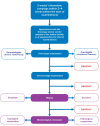
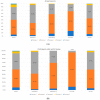
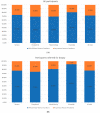

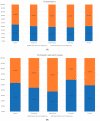
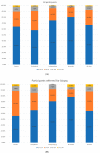

Similar articles
-
Evaluation of the American Academy of Dermatology's National Skin Cancer Early Detection and Screening Program.J Am Acad Dermatol. 1996 Jun;34(6):971-8. doi: 10.1016/s0190-9622(96)90274-1. J Am Acad Dermatol. 1996. PMID: 8647990
-
Melanoma/skin cancer screening in a Mediterranean country: results of the Euromelanoma Screening Day Campaign in Greece.J Eur Acad Dermatol Venereol. 2007 Jan;21(1):56-62. doi: 10.1111/j.1468-3083.2006.01865.x. J Eur Acad Dermatol Venereol. 2007. PMID: 17207168
-
Cutaneous melanoma in Iceland: changing Breslow's tumour thickness.J Eur Acad Dermatol Venereol. 2015 Feb;29(2):346-352. doi: 10.1111/jdv.12552. Epub 2014 Jun 9. J Eur Acad Dermatol Venereol. 2015. PMID: 24909543
-
Public education and cancer of the skin. What do people need to know about melanoma and nonmelanoma skin cancer?Cancer. 1995 Jan 15;75(2 Suppl):613-36. doi: 10.1002/1097-0142(19950115)75:2+<613::aid-cncr2820751403>3.0.co;2-g. Cancer. 1995. PMID: 7804987 Review.
-
Updates on the Management of Non-Melanoma Skin Cancer (NMSC).Healthcare (Basel). 2017 Nov 1;5(4):82. doi: 10.3390/healthcare5040082. Healthcare (Basel). 2017. PMID: 29104226 Free PMC article. Review.
References
-
- Kaprin A., Starinsky V., Shakhzadova O. Status of Oncological Healthcare for the Population of Russia in 2019. P.A. Herzen Moscow Oncology Research Center affiliated to FSBI NMRRC of the Ministry of Health of Russia; Moscow, Russia: 2020. 239p
-
- Samoylenko I., Kharkevich G., Utyashev I.A., Vishnevskaya Y.V., Orlova K.V., Demidov L.V. Do we have early detection of cutaneous melanoma in Russia? Single-institution observational study. J. Clin. Oncol. 2014;32(Suppl. 15):e20027
-
- Elmore J.G., Barnhill R.L., Elder D.E., Longton G.M., Pepe M.S., Reisch L.M., Carney P.A., Titus L.J., Nelson H.D., Onega T. Pathologists’ diagnosis of invasive melanoma and melanocytic proliferations: Observer accuracy and reproducibility study. BMJ. 2017;28:357. doi: 10.1136/bmj.j2813. - DOI - PMC - PubMed
-
- Analytical Report on the Level of Awareness of Russians about Melanoma and Willingness to Monitor the Condition of Their moles on Their Own or by a Doctor. [(accessed on 5 June 2020)];2019 Available online: https://wciom.ru/index.php?id=236&uid=9941.
LinkOut - more resources
Full Text Sources
Other Literature Sources

